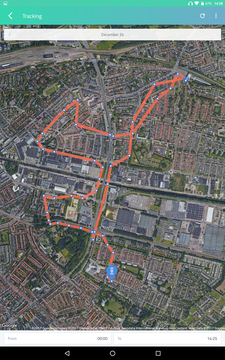DBK
LIFE MEMBER
In this Thread:
<Broken link removed>
I started to record my first impressions of constructing something using an Arduino Mini Pro, a tiny little processing board which weighs just 2g.
I've soldered a few wires and other bits and bobs to it since then.

The thing in the foreground is the GPS chip which is far too big but it is fine for a prototype. The little thing just beyond the Arduino is the LoRa radio transceiver. The copper wire is the antenna which given this is supposed to operate at 868 MHz is quite short. The red and black wires in the bottom left go to the battery box containing three AA batteries.
So I turned it on - and nothing seemed to happen! Not surprising really given my complete lack of knowledge of what I was doing.
The device is using a system called The Things Network which operates in specific frequency bands according to the part of the world you are. Europe is 868 MHz as already mentioned and it wasn't issuing a squawk on this frequency.
Then a minor breakthrough, I checked the US frequencies and this is what I saw:

The purple "flying saucers" in the bottom half of the display are packets of data it was transmitting. They are broadcast on several different frequencies chosen at random by the code.
So it was working, but speaking with an American accent around 904 MHz.
It has now been sorted thanks to a huge amount of help from an online friend who really does understand all this. . And the answer wasn't corrections to the code but the need to use a very specific version of a library when compiling it and to do the compiling on a specific (earlier) version of the IDE. I would never have thought this was how to solve this issue - and the other issues overcome I won't mention because they are too tedious to relate.
. And the answer wasn't corrections to the code but the need to use a very specific version of a library when compiling it and to do the compiling on a specific (earlier) version of the IDE. I would never have thought this was how to solve this issue - and the other issues overcome I won't mention because they are too tedious to relate.  One of the problems is if you use the latest versions of everything the resulting compiled code is too big to fit within the board's memory.
One of the problems is if you use the latest versions of everything the resulting compiled code is too big to fit within the board's memory.
This is just the first step, but it is a positive step. I'll start work tomorrow on decoding what the device is saying to me. It is saying something sensible as I can see the latitude and longitude in the packets of data but it needs a bit more tinkering to become useful.
<Broken link removed>
I started to record my first impressions of constructing something using an Arduino Mini Pro, a tiny little processing board which weighs just 2g.
I've soldered a few wires and other bits and bobs to it since then.
The thing in the foreground is the GPS chip which is far too big but it is fine for a prototype. The little thing just beyond the Arduino is the LoRa radio transceiver. The copper wire is the antenna which given this is supposed to operate at 868 MHz is quite short. The red and black wires in the bottom left go to the battery box containing three AA batteries.
So I turned it on - and nothing seemed to happen! Not surprising really given my complete lack of knowledge of what I was doing.
The device is using a system called The Things Network which operates in specific frequency bands according to the part of the world you are. Europe is 868 MHz as already mentioned and it wasn't issuing a squawk on this frequency.
Then a minor breakthrough, I checked the US frequencies and this is what I saw:
The purple "flying saucers" in the bottom half of the display are packets of data it was transmitting. They are broadcast on several different frequencies chosen at random by the code.
So it was working, but speaking with an American accent around 904 MHz.
It has now been sorted thanks to a huge amount of help from an online friend who really does understand all this.
This is just the first step, but it is a positive step. I'll start work tomorrow on decoding what the device is saying to me. It is saying something sensible as I can see the latitude and longitude in the packets of data but it needs a bit more tinkering to become useful.
Last edited:


